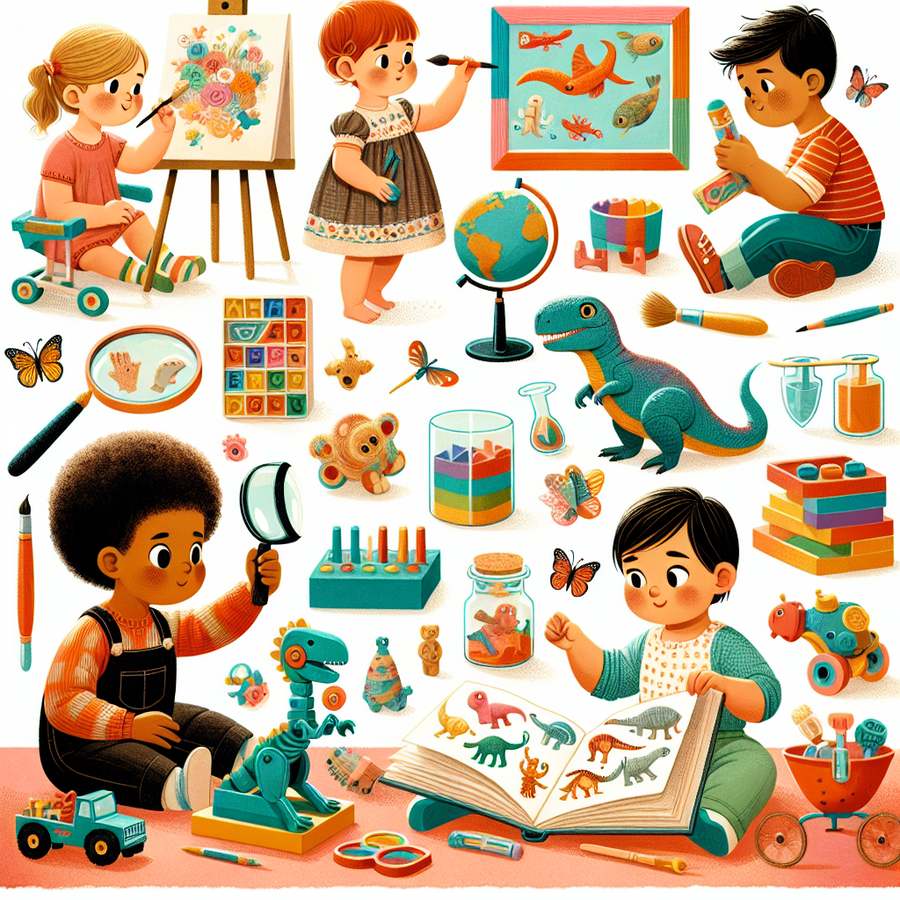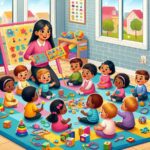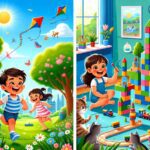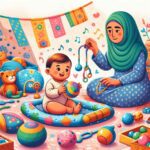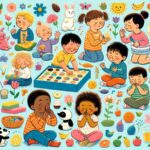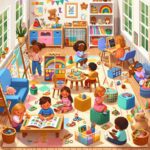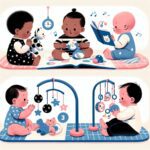Fostering creativity and curiosity in toddlers through play is a vital aspect of their early development. Engaging in play is not just a way to keep them occupied; it’s a critical method for enhancing their learning, creativity, and inquisitiveness about the world around them. This article explores ways parents and caregivers can nurture these essential skills through various play activities, ensuring a well-rounded developmental journey for their little ones.
The Importance of Play in Early Childhood Development
Play is the cornerstone of early childhood development. It is through play that toddlers learn to interact with their environment, develop problem-solving skills, and express their creativity. The benefits of play extend far beyond mere entertainment, contributing to the cognitive, physical, social, and emotional well-being of children. UNICEF highlights the crucial role of play in a child’s early years, emphasizing its potential to shape their future learning and development.
By fostering creativity and curiosity in toddlers through play, parents and caregivers can encourage an early love for learning. Creative play offers children the freedom to explore, imagine, and create, laying the foundation for innovative thinking and problem-solving skills. Meanwhile, curiosity-driven play motivates toddlers to ask questions and seek answers, fostering an inquisitive mindset that benefits all areas of learning.
Fostering Creativity and Curiosity in Toddlers Through Play
Fostering creativity and curiosity in toddlers through play involves more than just providing them with toys. It requires an environment where they feel safe to explore, experiment, and express themselves. This section offers practical tips and ideas to enrich your toddler’s playtime, emphasizing activities that nurture their creative and curious spirits.
One effective strategy is to introduce open-ended toys—those that can be used in multiple ways, depending on the child’s imagination, such as blocks, play dough, and art supplies. These types of toys encourage creativity, as there are no right or wrong ways to play with them. Additionally, incorporating storytelling and reading into playtime can spark curiosity and imagination, opening up new worlds for toddlers to explore.
Engaging in nature play is another fantastic way to foster curiosity. Outdoor activities, such as gardening, collecting leaves, or simple walks in the park, encourage toddlers to ask questions about the natural world. Creating a baby-friendly home that safely supports exploration is crucial for nurturing this innate curiosity.
Play Ideas to Stimulate Creativity and Curiosity
To effectively foster creativity and curiosity in toddlers through play, it’s important to provide a variety of play experiences. Here are some ideas to get you started:
- Build an obstacle course using cushions and furniture to encourage problem-solving and creativity.
- Organize a treasure hunt with hidden objects around the house to spark curiosity and exploration.
- Set up a DIY craft station with different materials for unstructured artistic expression.
- Engage in role-playing games, allowing your toddler to lead the story and characters.
- Introduce simple science experiments, like mixing colors or observing plant growth, to foster a love for discovery.
Remember, the goal is to create a playful environment that encourages your toddler to explore, ask questions, and think creatively. By integrating these play ideas into your daily routine, you can significantly contribute to your child’s development of creativity and curiosity. Caring for yourself as a parent is also essential, as it enables you to engage fully and joyfully in your toddler’s play and exploration.
In conclusion, fostering creativity and curiosity in toddlers through play is crucial for their overall development. By providing varied and enriching play experiences, parents and caregivers can lay a strong foundation for their children’s future learning and growth. Remember, each child is unique, so it’s important to observe and adapt play activities to suit your toddler’s interests and developmental stage. Let the journey of discovery begin!

